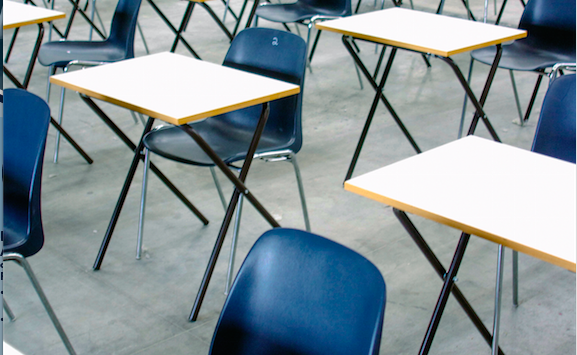The Trump administration wants to redefine the way we set the poverty line in this country, which would mean fewer families would be classified as living in poverty. That, in turn, would mean less money for schools and less support for the most disadvantaged students.
The administration’s proposal would tie the U.S. Census’s poverty levels to a different calculation of the Consumer Price (CPI) than the one currently used. The most likely choice for a new index is known as “chained CPI,” and inflation tends to increase more slowly under its formula, according to the Congressional Budget Office. Ultimately that would make it harder for a student or family to be considered “low-income.”
For schools, federal poverty levels are used to determine which students can attend Head Start programs and, in many cases, who qualifies for free or reduced-price meals at school. More than 100,000 school-age children would lose eligibility altogether for the meals program, and another 100,000 would move from free meals to the reduced-price category, according to estimates by the nonpartisan Center for Budget and Policy Priorities (CBPP).
What’s more, census data, eligibility for the meals programs, and participation in other federal programs are all used to decide which schools qualify for extra funding through Title I of the Every Student Succeeds Act.
The New York Times just reported on a school in Baltimore that lost $240,000 in federal money when the share of students who were considered to be from low-income families fell below the threshold for schoolwide Title I funding. In that case, the city has tied its calculation of poverty rates to students qualifying for such federal programs as Medicaid and food stamps. Trump administration policies have prompted many immigrant families to forego these programs, leaving the poverty rate in many schools artificially low.
[Read More: New Strategies for Measuring Poverty in Schools]
That problem would only grow worse if the administration puts in place a new, more restrictive definition of poverty, meaning the loss of Title I funding could affect more schools across the country.
Added to the possible undercount of immigrant children that could come with the 2020 Census, especially if the U.S. Supreme Court allows for a question about citizenship, schools could receive less money even as they serve more and more vulnerable students.
Redefining poverty would at the same time significantly reduce the number of children and families eligible for food stamps, Medicaid and the Children’s Health Insurance Program (CHIP). CBPP estimates that 300,000 children would lose health coverage, and nearly 200,000 people would lose access to food stamps.
The result would be more hungry, unhealthy students in the classroom—and ultimately, weaker academic performance. Research shows that students who receive Medicaid are more likely to attend school regularly, make better grades and graduate on time. Medicaid also keeps families from falling into debt or bankruptcy, protecting children from the adverse childhood experience such financial setbacks can bring.
[Read More: How Can Schools Help Lift Health Barriers to Learning?]
What’s troubling is the Trump administration’s proposed change would not necessarily make poverty calculations more accurate. Edwin Park, who works at another Georgetown University institution, the Center for Children and Families, points to two studies that show low-income households have higher rates of inflation than others. A better approach to recalculating poverty, he suggests, would be adopting the U.S. Census Bureau’s Supplemental Poverty Measure, which would factor in more of a family’s basic living expenses.
There is a lively debate among economists about the best approach and about the value of the current poverty line calculations, which are largely based on food costs. (This Vox piece and accompanying clip from The West Wing are very helpful in understanding the nuances.) But the administration provides no evidence that officials have analyzed the various approaches or the efficacy of the federal poverty line. Their proposal mentions a couple of different approaches to calculating poverty. But the betting is on chained CPI, since that index was inserted into the 2017 tax bill.
The Office of Management and Budget took comments on the proposal through June 21, and could seek to implement the change at any point. Whether officials can legally change the poverty line calculation through regulation, rather that legislation, remains to be seen. But it’s an issue that school leaders and education policymakers can’t afford to ignore.

